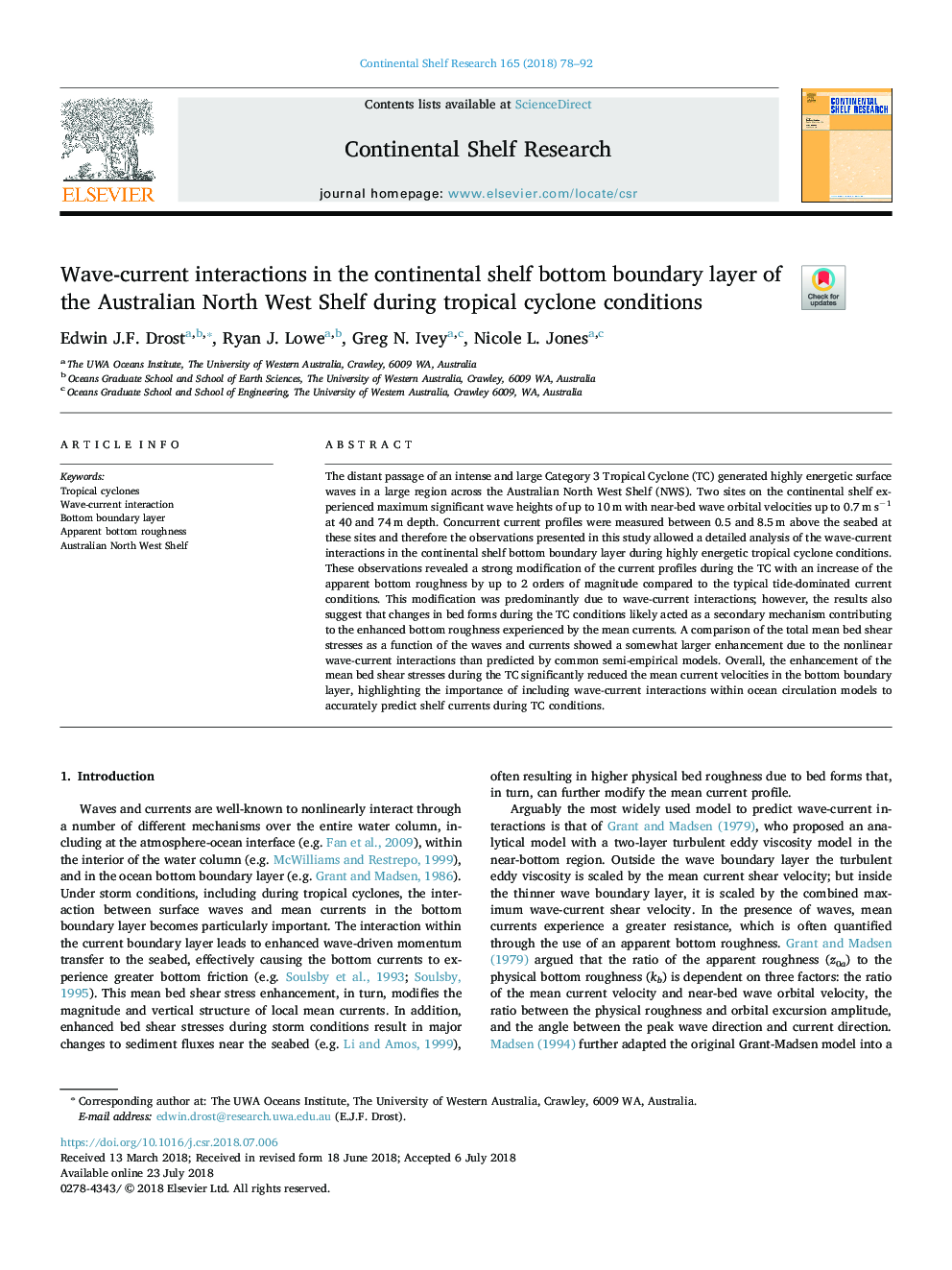| Article ID | Journal | Published Year | Pages | File Type |
|---|---|---|---|---|
| 8884013 | Continental Shelf Research | 2018 | 15 Pages |
Abstract
The distant passage of an intense and large Category 3 Tropical Cyclone (TC) generated highly energetic surface waves in a large region across the Australian North West Shelf (NWS). Two sites on the continental shelf experienced maximum significant wave heights of up to 10â¯m with near-bed wave orbital velocities up to 0.7â¯mâ¯sâ1 at 40 and 74â¯m depth. Concurrent current profiles were measured between 0.5 and 8.5â¯m above the seabed at these sites and therefore the observations presented in this study allowed a detailed analysis of the wave-current interactions in the continental shelf bottom boundary layer during highly energetic tropical cyclone conditions. These observations revealed a strong modification of the current profiles during the TC with an increase of the apparent bottom roughness by up to 2 orders of magnitude compared to the typical tide-dominated current conditions. This modification was predominantly due to wave-current interactions; however, the results also suggest that changes in bed forms during the TC conditions likely acted as a secondary mechanism contributing to the enhanced bottom roughness experienced by the mean currents. A comparison of the total mean bed shear stresses as a function of the waves and currents showed a somewhat larger enhancement due to the nonlinear wave-current interactions than predicted by common semi-empirical models. Overall, the enhancement of the mean bed shear stresses during the TC significantly reduced the mean current velocities in the bottom boundary layer, highlighting the importance of including wave-current interactions within ocean circulation models to accurately predict shelf currents during TC conditions.
Related Topics
Physical Sciences and Engineering
Earth and Planetary Sciences
Geology
Authors
Edwin J.F. Drost, Ryan J. Lowe, Greg N. Ivey, Nicole L. Jones,
